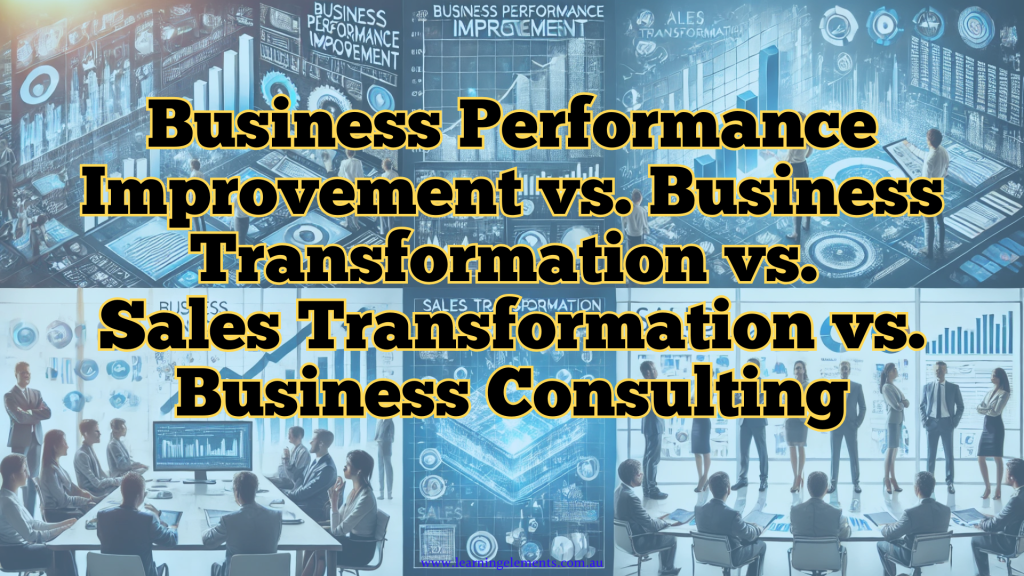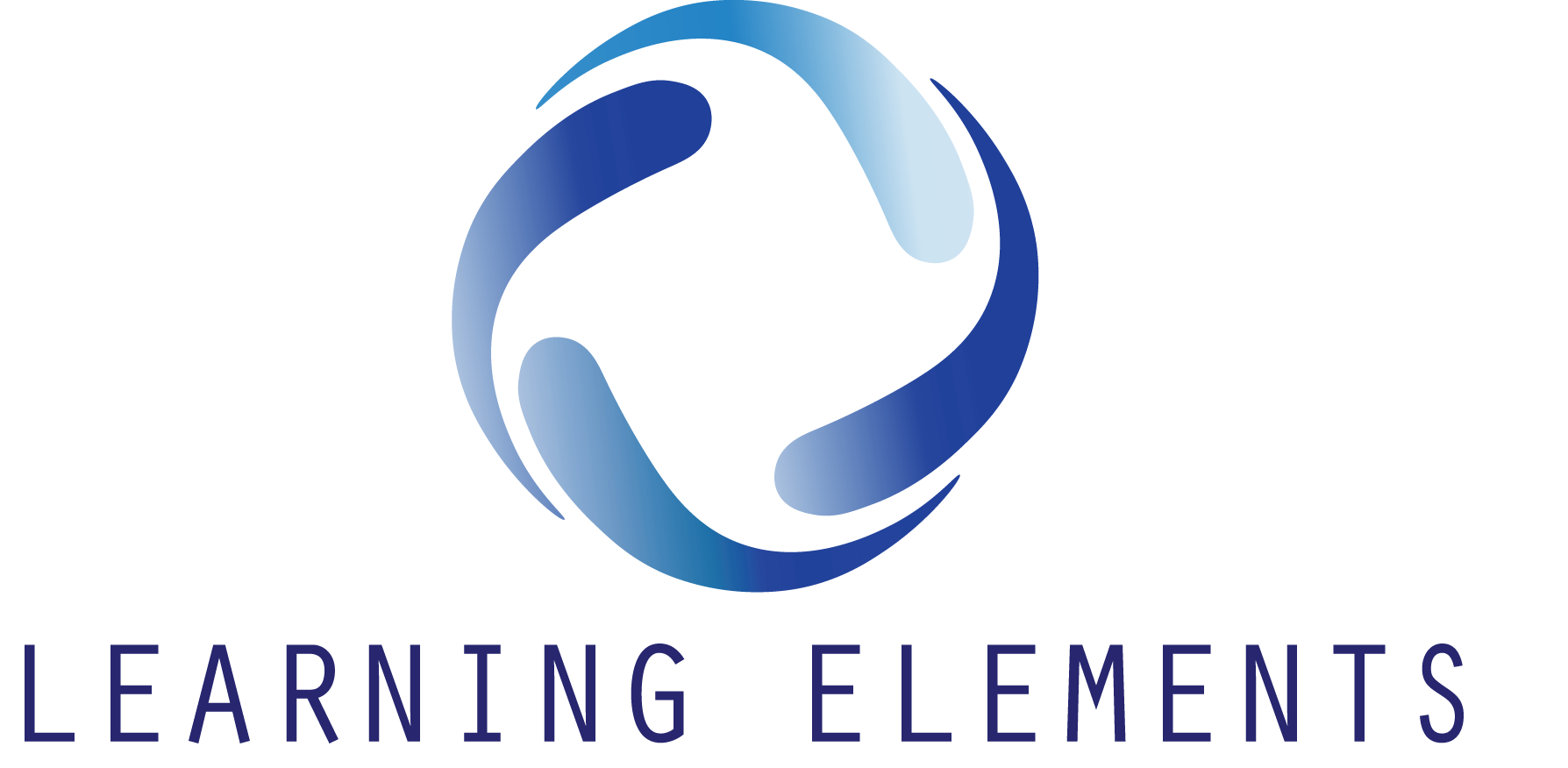Business Performance Improvement: Enhancing Organisational Success Through Effective Training and Coaching
Business performance improvement is essential for organisations that want to remain competitive and achieve long-term success. Effective training and coaching help develop employees’ skills, boost productivity, and drive better results. By equipping teams with the right knowledge and strategies, businesses can enhance efficiency, adapt to industry changes, and improve overall performance. Well-structured training programs ensure employees stay engaged, motivated, and aligned with company goals. Coaching further supports leadership development, decision-making, and problem-solving capabilities. Investing in these initiatives leads to stronger teamwork and higher job satisfaction.
What is Business Performance Improvement?
Business performance improvement refers to strategies and practices designed to enhance efficiency, productivity, and profitability within an organisation. It involves optimising processes, upskilling employees, and implementing performance-driven methodologies.
Measuring Success in a Corporate Setting
Organisations measure business performance improvement through:
- Key Performance Indicators (KPIs)
- Employee skill enhancement
- Increased operational efficiency
- Higher customer satisfaction rates
Data-Driven Decision Making in Performance Improvement
Using data and analytics enables organisations to make informed decisions and measure the effectiveness of their strategies. Businesses track performance through key metrics such as employee progress, training completion rates, and productivity improvements. Learning analytics provide insights into how well employees absorb training materials, allowing organisations to refine their training programs. Regular surveys, performance evaluations, and engagement metrics help identify skill gaps. By leveraging data, businesses can tailor their training initiatives to meet specific needs, track progress over time, and ensure that performance improvement efforts lead to measurable outcomes.
Training for Business Performance Improvement
Instructor-Led Training (ILT)
Instructor-led training offers a structured, real-time interaction that enhances knowledge retention and engagement.
Self-Paced Learning
Self-paced learning allows employees to develop skills at their convenience, promoting flexibility while ensuring knowledge acquisition aligns with business needs.
Online Training and E-Learning
E-learning platforms provide accessible and scalable training solutions, enabling remote teams to participate in business performance improvement initiatives effectively.

Virtual Instructor-Led Training (VILT)
Virtual Instructor-Led Training (VILT) combines the structure of traditional classroom training with the flexibility of online learning. Unlike self-paced e-learning, VILT provides real-time interaction with instructors, fostering engagement and collaborative learning.
Benefits of VILT:
- Cost-Effective: Reduces travel and logistics expenses associated with in-person training.
- Scalable: Enables organisations to train large, distributed teams efficiently.
- Interactive Learning Experience: Live discussions, breakout sessions, and Q&A opportunities enhance understanding.
- Flexibility: Employees can join from anywhere while maintaining direct access to trainers.
Types of VILT:
- Live Webinars and Workshops: Short, focused sessions ideal for knowledge sharing and skill-building.
- Hybrid Training Models: Blends live instruction with self-paced learning materials.
- Simulation-Based Learning: Uses interactive scenarios and role-playing to reinforce concepts.
Integrating VILT with e-learning modules and post-training assessments can enhance knowledge retention and application.
RELATED READ: What is VILT? and The Essence of Virtual Instructor-Led Training (VILT)
The Impact of Workplace Well-Being on Performance
Employee well-being is directly linked to productivity, engagement, and overall business performance. A work environment that supports mental health, work-life balance, and overall well-being enhances employees’ ability to engage in training and apply new skills effectively.
- Well-Being Enhances Learning Engagement and Retention: Employees experiencing high stress or burnout struggle to concentrate and retain information during training. When organisations promote work-life balance, provide wellness programs, and reduce workplace stressors, employees can fully engage in learning activities and retain knowledge more effectively.
- A Positive Work Environment Improves Coaching Effectiveness: Coaching is most effective when employees feel psychologically safe and supported. Leaders who prioritise well-being create a culture where employees are more receptive to feedback, open to professional growth, and motivated to implement coaching insights into their roles.
- Sustaining Performance Through Well-Being: A workplace that values well-being fosters long-term skill application. Employees in a supportive environment are more likely to consistently apply new skills, collaborate effectively, and contribute to business performance improvement beyond initial training and coaching sessions.
Coaching for Business Performance Improvement
Leadership and Executive Coaching
Leadership coaching helps executives develop decision-making, strategic thinking, and team management skills. By working with a coach, leaders can enhance their ability to solve complex business challenges, drive organisational growth, and foster a high-performance culture. Coaching sessions focus on leadership styles, emotional intelligence, and effective communication to strengthen executive presence and influence.
Team Development Coaching
Effective teamwork is essential for achieving business objectives. Team development coaching focuses on improving collaboration, trust, and communication among employees. It helps teams align their efforts with company goals, resolve conflicts constructively, and enhance overall efficiency. Practical coaching techniques include team-building exercises, role-specific mentoring, and feedback-driven performance improvements.
Performance Coaching for Employees
Individual performance coaching helps employees develop targeted skills and behaviours that improve productivity and professional growth. This approach identifies strengths, addresses skill gaps, and provides personalised development plans. Coaches work closely with employees to set achievable goals, improve time management, and enhance job performance, leading to greater job satisfaction and career progression.
The Role of Leadership in Sustaining Performance Improvement
Strong leadership is essential for maintaining and reinforcing business performance improvement. Leaders play an important role in setting expectations, providing direction, and fostering a culture that values continuous development. When managers actively support employee learning, they help integrate training into daily operations, ensuring that new skills and strategies are applied effectively. Leadership development programs equip managers with the skills needed to mentor employees, drive team performance, and adapt to organisational changes. Coaching and leadership training enhance decision-making, problem-solving, and strategic thinking, all of which are crucial for sustaining long-term improvements.
Instructional Design for Business Performance Improvement
Creating Effective Training Programs
For training to be impactful, it must be engaging, relevant, and well-structured. Key instructional design strategies include:
- Learner Needs Analysis: Conducting pre-training assessments to understand skill gaps and business requirements ensures training meets organisational goals.
- Content Chunking: Breaking complex information into smaller, digestible modules enhances retention and prevents cognitive overload.
- Assessment Methods: Implementing quizzes, case studies, and practical exercises helps gauge comprehension and reinforce learning.
- Scenario-Based Learning: Using real-world business cases allows employees to apply theoretical knowledge to practical situations.
RELATED READ: Outsourcing Instructional Design Work and Its Benefits
Blended Learning Approaches
Blended learning integrates instructor-led training, self-paced courses, and digital tools to accommodate diverse learning styles and schedules. This approach increases accessibility and flexibility, allowing employees to learn at their own pace while still benefiting from expert guidance. Incorporating interactive elements like live discussions, collaborative projects, and AI-driven assessments enhances engagement and knowledge application. Practical implementation includes:
- Balancing Self-Paced Modules with Instructor-Led Sessions: Assigning foundational concepts to online courses and reserving live sessions for discussions, case studies, and interactive problem-solving.
- Leveraging Microlearning: Providing short, focused learning modules that employees can complete at their convenience helps reinforce key concepts.
- Using Learning Management Systems (LMS): An LMS can integrate multiple learning formats, track progress, and personalise training pathways.
- Facilitating Collaborative Learning: Incorporating peer discussions, group projects, and interactive assignments enhances engagement.
Customised Learning Solutions for Corporates
Every organisation has unique challenges, requiring tailored learning solutions that address specific business needs. Customised training ensures that content is relevant to employees’ roles, industry requirements, and company objectives. This includes developing role-based training, competency frameworks, and personalised development plans to maximise the impact of learning initiatives.
Challenges in Implementing Training and Coaching for Business Performance Improvement
Employee Engagement and Participation
Ensuring employee motivation and participation in training programs is a significant challenge. Low engagement can lead to poor knowledge retention and reduced impact on business performance. Organisations need strategies to make training engaging, relevant, and aligned with career development goals.
Aligning Training with Organisational Goals
Training must be aligned with business objectives to deliver tangible performance improvements. Without a clear connection to company goals, training efforts may fail to produce measurable results.
Measuring Return on Investment (ROI)
Assessing the impact of training and coaching on business performance improvement requires clear metrics and evaluation methods. Without proper measurement, it is difficult to determine the effectiveness of learning initiatives.
Compliance and Risk Management in Performance Improvement
Aligning training and performance improvement initiatives with industry regulations is essential for minimising risks. Organisations must stay updated on legal standards, workplace policies, and safety protocols to avoid potential liabilities. Training programs should include compliance modules that educate employees on regulatory requirements relevant to their roles. Regular assessments and audits help ensure that compliance training remains up to date and effective. By integrating risk management into performance improvement strategies, businesses can maintain operational integrity, protect their reputation, and avoid costly legal issues.
Organisational Culture and Change Management
Business performance improvement is not just about implementing training and coaching programs but also about creating a culture that supports continuous learning, growth, and adaptability. An organisation’s culture shapes employee behaviours, influences decision-making, and determines how well teams respond to change. A culture that values learning and innovation encourages employees to embrace training opportunities and apply new skills effectively. Change management plays a crucial role in ensuring that performance improvement initiatives lead to lasting results. Resistance to change is a common challenge when introducing new processes, technologies, or training methods. Effective change management strategies, such as clear communication, leadership support, and involving employees in the process, can help smooth transitions.
Strategies for Effective Business Performance Improvement
–Tailoring Training to Workforce Needs:
Every organisation has unique skill gaps and business requirements. Customising learning programs based on workforce needs ensures that training is relevant and directly applicable to employees’ roles. Conducting skills assessments, analysing job performance data, and gathering employee feedback help identify areas for improvement. By aligning training content with business objectives and individual development goals, organisations can enhance learning effectiveness and drive measurable performance improvements.
–Using Technology to Enhance Learning:
AI-driven platforms personalise training based on employee progress, ensuring targeted skill development. Virtual classrooms enable real-time collaboration, while gamification elements, such as rewards and challenges, boost engagement. Organisations can also leverage learning management systems (LMS) to track progress, automate assessments, and deliver flexible online courses. Integrating these technologies enhances knowledge retention and allows employees to learn at their own pace.
–Continuous Evaluation and Feedback Mechanisms:
To maximise the impact of training initiatives, organisations must regularly assess their effectiveness. Continuous evaluation involves monitoring training completion rates, employee performance improvements, and business outcomes. Feedback mechanisms, such as post-training surveys, performance reviews, and peer assessments, provide insights into learning effectiveness and areas that need adjustment. By using data-driven evaluations and making necessary refinements, businesses can ensure that training remains relevant, impactful, and aligned with evolving organisational goals.
–Employee Engagement and Motivation Strategies:
Keeping employees engaged in training requires a structured approach. Personalised learning paths, recognition programs, and career development opportunities make training more relevant and rewarding. Blended learning formats and gamification enhance engagement by catering to different learning styles. Leadership support is essential in fostering a culture of continuous development and reinforcing the value of training.
–The Importance of Soft Skills in Business Performance:
While technical expertise is important, soft skills are equally crucial in driving business success. Skills such as communication, teamwork, adaptability, problem-solving, and emotional intelligence enable employees to collaborate effectively and respond to challenges. Businesses can integrate soft skills training into their learning programs through workshops, mentoring, and real-world application exercises. Encouraging employees to develop these skills alongside technical abilities ensures a well-rounded workforce.
–Leadership Support in Training Initiatives:
Leaders play a crucial role in ensuring that training is effectively integrated into daily operations. Beyond simply endorsing learning initiatives, leadership involvement must be active and continuous. Effective strategies include:
- Mentoring and Peer Coaching: Encouraging experienced employees and managers to mentor junior staff helps reinforce learning and provides real-world application.
- Structured Follow-Ups: Regular check-ins, performance reviews, and feedback sessions help employees apply newly acquired skills in their roles.
- Leading by Example: When managers actively participate in training programs, employees are more likely to see the value of learning and engage fully.
- Embedding Learning in Workflows: Encouraging employees to apply training insights in daily tasks through project-based learning, discussion groups, or case studies ensures practical implementation.
–Personalised Learning and Development Plans:
A one-size-fits-all training approach often fails to address individual employee needs. Personalised learning and development plans ensure that training aligns with specific skill gaps, career progression goals, and business objectives. Effective strategies include:
- Competency Assessments: Identifying employees’ current skill levels and comparing them with role-specific competencies helps tailor learning programs.
- Career Progression Pathways: Mapping out clear career development routes enables employees to see how training contributes to professional growth.
- Adaptive Learning Technologies: AI-driven learning platforms personalise content based on an employee’s progress, ensuring a customised experience.
- Role-Based Training Modules: Developing training content specific to job functions ensures relevance and direct applicability.

Business Performance Improvement vs. Business Transformation vs. Sales Transformation
- Business Performance Improvement focuses on optimising efficiency, productivity, and profitability within an existing framework. It includes strategies like training, process optimisation, and technology upgrades.
- Business Transformation involves a more fundamental change, such as shifting business models, restructuring operations, or adopting new market strategies.
- Sales Transformation is a specific type of business transformation that focuses on changing sales strategies, processes, and structures to improve revenue growth.
Business Consulting in Performance Improvement
Enhancing organisational performance requires identifying gaps, optimising processes, and implementing strategic improvements. When training and coaching are integrated with consulting, businesses can develop tailored learning solutions that address specific operational challenges. Through workforce assessments, consultants recommend targeted training programs and align coaching initiatives with long-term business objectives. Integrating consulting with learning strategies ensures that training investments lead to measurable performance improvements, increased efficiency, and sustainable growth.
Learning Elements supports organisations by:
- Developing strategic plans that align with business goals.
- Enhancing leadership and employee capabilities through coaching and training.
- Optimising business processes to improve efficiency and profitability.
Need expert guidance on strategy development? Let’s discuss how Learning Elements can help. Check out our training courses or contact us today!
Future Trends in Business Performance Improvement
- AI and Personalised Learning Paths: Artificial intelligence enables personalised training experiences, improving learner engagement and retention.
- Virtual and Augmented Reality in Training: VR and AR technologies provide immersive learning experiences, enhancing skills development in corporate settings.
FAQs
- What is the role of coaching in business performance improvement? Coaching helps individuals and teams develop essential skills, enhance productivity, and align their performance with business objectives.
- How can companies measure the success of training programs? Companies use KPIs, employee feedback, productivity metrics, and ROI analysis to assess training effectiveness.
- What are the benefits of blended learning? Blended learning combines different training methods to cater to various learning styles, ensuring better engagement and knowledge retention.
- How does technology enhance corporate training? Technology facilitates online learning, real-time assessments, and AI-driven personalisation, making training more effective and accessible.
- What are common mistakes in implementing performance improvement programs? Common mistakes include lack of clear objectives, inadequate training customisation, poor engagement strategies, and failure to measure impact.
Conclusion
Business performance improvement relies on a strategic combination of training, coaching, leadership involvement, and technology-driven learning. Modern learning techniques and continuous development enhance efficiency, innovation, and overall success. Well-designed training ensures employees remain adaptable to evolving challenges, while coaching strengthens leadership and decision-making. A commitment to learning fosters a high-performance culture, driving long-term growth and competitive advantage. Aligning training and coaching with business objectives leads to measurable improvements in productivity and engagement. Investing in these initiatives boosts efficiency, profitability, and workforce resilience, ensuring sustainable success.
Looking to improve business performance and strategy execution? Let’s discuss how Learning Elements can help. Check out our training courses or get in touch today!

